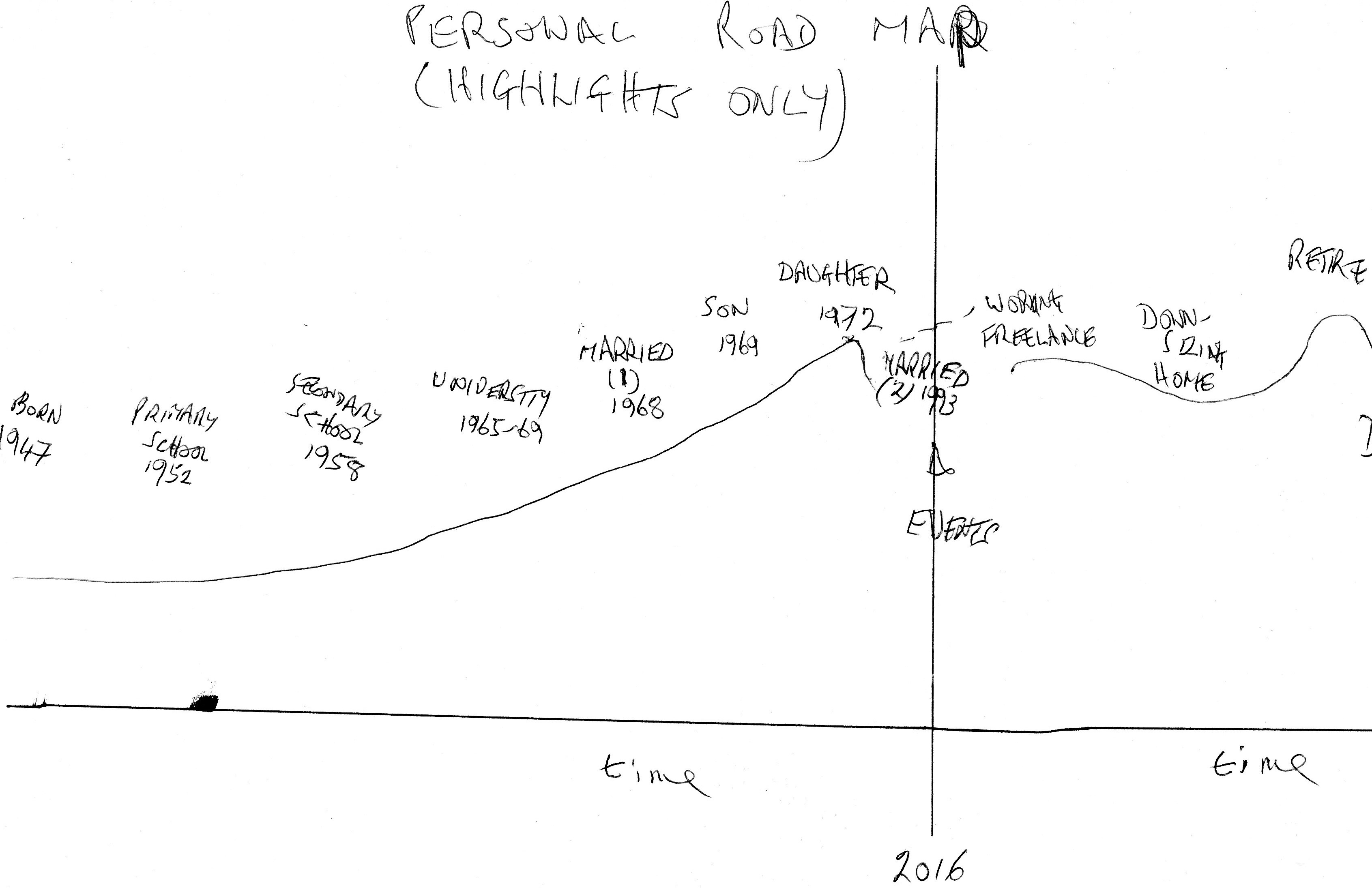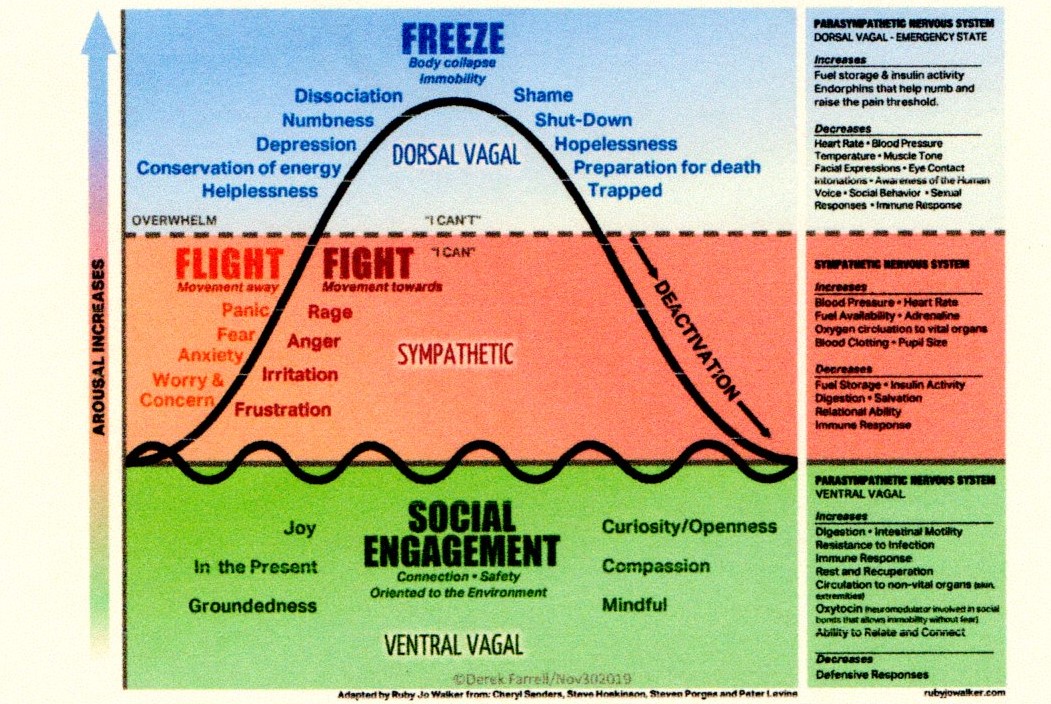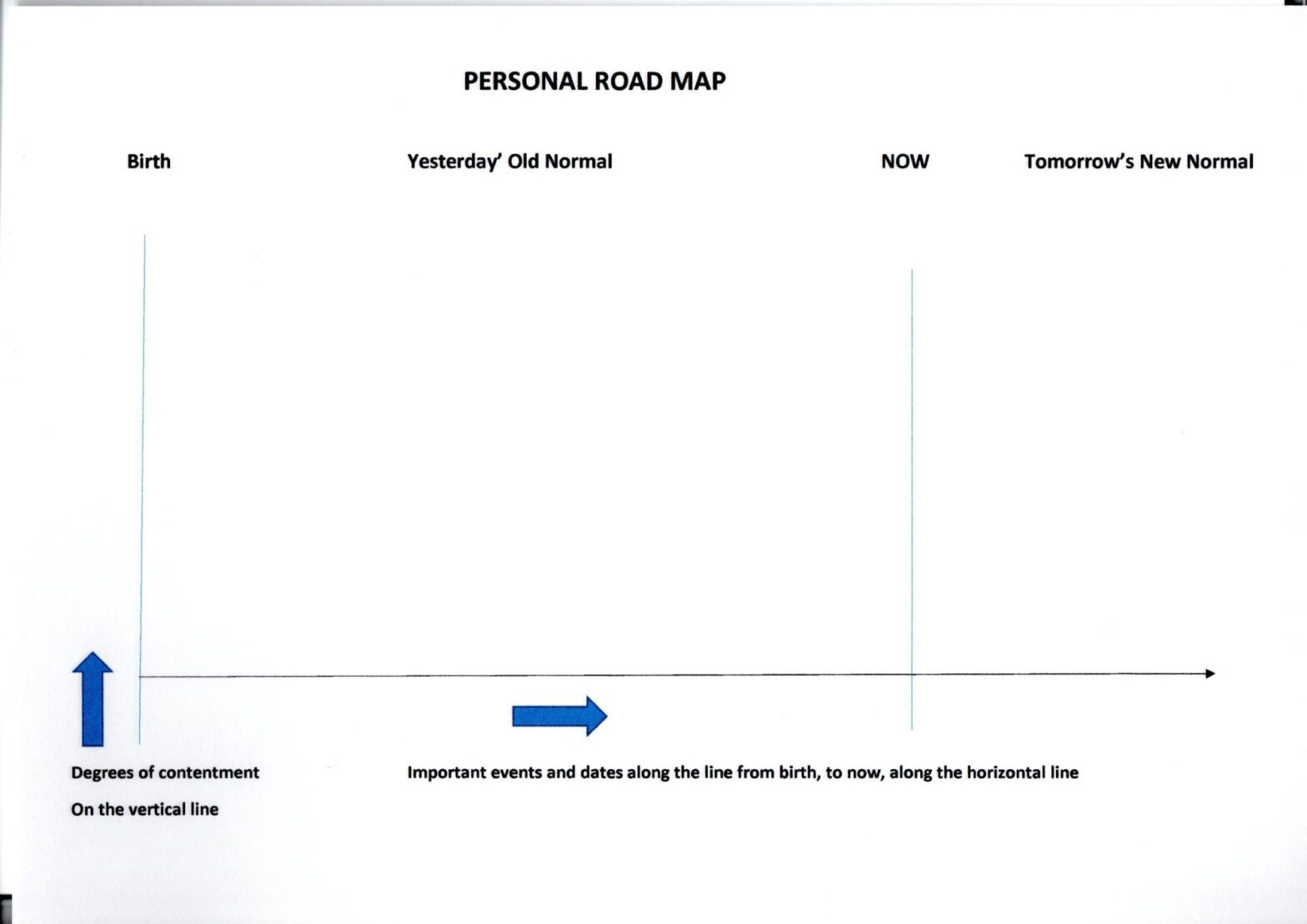Are there any ‘safe experiments’ that can help us deal with experiences from our distant past? If, as the inverted tree implies, the past is “for information only”, is there any way to change the seemingly unchangeable?
The traditional views from psycho-analytic thinking (Freud, Jung and others) seems rather pessimistic in the 21st century. To summarise a myriad of books, the traditional models contain a sense of ‘determinism’; that is – we are what we were, and our task is to learn to live with it.
Advances in neuro-science over a half-century, and the concept of ‘neuro-plasticity’ has changed things radically. Even if our past cannot be re-written, we could view it differently.
The Body Keeps the Score
(Thanks to Bessel van der Kolk for the title)
The way our history plays out in our bodies, and in our relationships today. Now it is accepted that any such patterns can be changed.
This is well illustrated at the end of the Yellow Brick Road, in The Wizard of Oz. The Acceptance and Commitment perspective, as well as the Compassion-focused approach have things to say about how to foster changes.
Just as the body replaces every cell roughly every seven years, so our relationships grow and mature. Our mind need not be chained to a fixed view of the world. Elsewhere, I have written about the ways in which issues in our early years can come to haunt us.
Using the Road Map
A good start is to gather together the facts. The Road Map safe experiment has been described in How to Give Yourself an Nudge. An updated diagram is included at the head of this page.
Here is my own edited personal example.
Note that this contains only factual information; your road map is likely to include events and experiences of a more deeply personal nature.

This is an example based on key events in my own life.
I have marked my key events on the bottom line – the ‘time’ line.
The upright line marks today (I did this example in 2016!).
History, my past, is to the left of the picture, and things to come – on the right.
Use the ‘upright’ line to ‘measure’ degrees of your contentment and satisfaction with your life. Near the bottom, things are not good and they improve toward the top of the road map.
When you identify key events, how does your line of ‘contentment’ look? Much as you expected? Is it how you would like it to be or, at least, can you accept things as they appear?
A starting point and still a challenge
Bear in mind this safe experiment can be challenging – it may not always feeling so ‘safe’ as I would like for you. For that reason, I have recommended that this exercise be completed when you have some support on hand, some-one with whom you can share the experience.
Do not be surprised if there are tears and sadness. Just notice those experiences and ‘look them in the eye’. A natural response for some will be to rush away from them. You may notice a drive to push such experiences to one side or side-step it. This is normal, if not always helpful. If you are able to slow down, you may find it more possible to stay with the experience.
Here it helps to make brief notes after the event; you may find a reminder helpful later when you get to talk more about the impact of your Road Map. Taking notes slows us down and that can be a small, safe experiment in its own right.
It may help to consider the relationship between these early life experiences and the workings of our central nervous system. In particular, the tenth of the twelve cranial nerves, called the Vagus nerve, reacts in a range of complex ways to ‘protect’ us when we sense threat. It does not necessarily feel like protection – but the INTENTION of the system is to protect.
Threats to safe experimenting with the Road Map
I have a wonderful handout of the complex neurological responses but I’ve not been able to present it to you for a number of reasons. Look out for the websites run by Babette Rothschild and Stephen Porges to see what you can find!
One illustration I will produce is::

Fight and Flight
Notice how the well-known fight/flight response, in the orange rectangle is now sandwiched:
1. between the workings of ‘social engagement’ or ventral vagus activities that keep us in the Green Zone ( a kind of Window of Tolerance [WoT]), and
2. the impact of the Dorsal Vagus – this is able to take us into rather dangerous territory when our life is threatened or our ability to survive comes into question. My own diagram of the Window of Tolerance (WoT) shows how difficult it is to stay in the working area when we want to change something. There is an ever-present tendency to dive for ‘home’ or the extremes at the four corners of that illustration.
This massive reaction, described in the blue rectangle, is a ‘hangover’ from our reptilian past. It has the potential to create problems because mammals evolved to be warm-blooded creatures; reptiles are cold-blooded. This major difference would have presented evolutionary challenges. As I understand it, nature’s response was to develop a ‘social engagement system’ in a modified Vagus nerve – a change intended to help humans survive using different and rather more sophisticated strategies.
Any safe experiments simply to slow down?
Reptiles have no trouble slowing down. They can stayed slowed down – even frozen still – for long periods. Warm-blooded creatures are not so keen on the idea and mammals appear to find those marathon sessions rather life-threatening.
Have you any strategies was to help manage ‘slowing down’ differently.
The website has a number of safe experiments focused on slowing ourselves down; enough to stop, look and listen – just enough to stay in the area of that black, wavy line just one-third the way up into the diagram.
